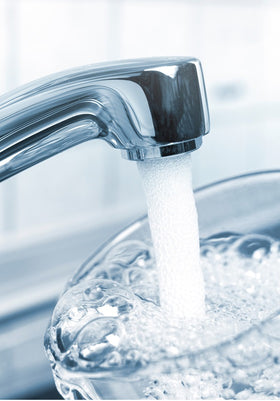
When to Change Reverse Osmosis Filters: A Complete Guide
Ever wondered when to change your reverse osmosis filters? The short answer: every 6–12 months! Whether you’ve got a countertop dispenser or a full system, keeping your filters fresh ensures clean, tasty water. In Reverse Osmosis: Specialised Topics and Advanced Insights, we share easy tips on timing, spotting signs of wear, and avoiding common mistakes.
Understanding RO Filter Lifespan
When you invest in a reverse osmosis system, you want to get the best performance possible. But just like anything else, the filters don’t last forever. Understanding how long your RO filters should last—and what affects their lifespan—is the first step in making sure your water stays crystal clear.
Types of RO Filters and Their Durations
There are several different types of filters in a reverse osmosis system, and each one has its own lifespan. Here’s a quick rundown:
-
Pre-filters (Sediment and Carbon): These typically last about 6 to 12 months. They do the heavy lifting by trapping dirt, chlorine, and other particles before they reach the membrane.
-
RO Membrane: This is the heart of the system. It usually lasts 2 to 3 years, depending on how often you use your system and how dirty the incoming water is.
-
Post-filters: These are the last line of defence before your water comes out of the tap. They generally need to be replaced every 12 months.
Each filter works together to ensure the water is clean and safe, so it’s important to replace them on schedule.
Factors Affecting Filter Lifespan
Now, while every filter has an estimated lifespan, there are a few factors that can make them wear out faster. Think of it like a pair of trainers—how much you use them, the terrain, and how well you take care of them all play a role.
-
Water Quality: If you live in an area with hard water or high levels of sediment, your filters will work overtime to trap those impurities. This can lead to more frequent changes.
-
Water Usage: The more water you consume, the more often your filters will need replacing. Larger households or higher water usage can shorten the lifespan of your filters.
-
Maintenance: Keeping your system in top shape with regular maintenance can help extend the life of your filters. A clean, well-maintained system is far less likely to break down prematurely.
Signs It's Time to Change Filters
Let’s face it, waiting until your water tastes like a swimming pool is not ideal. So how do you know when it’s time for a change? Here are some signs that your filters are calling it quits.
Reduced Water Flow and Pressure
One of the first indicators that your filters need replacing is a drop in water flow. If you’ve noticed that your faucet is taking longer to fill a glass or your water pressure is lower than usual, it’s likely because your filters are clogged. Sediment and particles can build up over time, restricting the flow and reducing pressure.
Changes in Water Taste and Odour
Water that tastes or smells off is another tell-tale sign your filters are due for a change. If you start noticing a strange taste (like metal or chlorine) or an unpleasant odour, it means your filters are no longer removing contaminants as effectively. Fresh, clean water should taste just that—fresh and clean.
Regular Maintenance Schedules
When it comes to filter replacement, having a regular maintenance schedule is key. You don’t want to wait until something goes wrong to realise your filters are long overdue for a change.
Manufacturer Recommendations
Your RO system likely came with a user manual that includes specific guidelines for when to change the filters. Manufacturers typically recommend changing the filters every 6 to 12 months. Of course, this can vary depending on your water usage and quality, but the manual gives you a good starting point.
Creating a Maintenance Calendar
The easiest way to stay on top of filter replacements is to create a maintenance calendar. Setting up reminders on your phone or marking the date in your diary will ensure you don’t miss a filter change. It’s an easy way to keep your system running smoothly without any guesswork.
Benefits of Timely Filter Replacement
Replacing your RO filters on time isn’t just about keeping your water clean—it has a number of other benefits as well.
Ensuring Optimal System Performance
When you replace your filters on schedule, you’re helping your RO system perform at its best. Clean filters allow the system to operate efficiently, giving you the best water quality without any hassle. And let’s face it—nobody wants a sluggish water filtration system.
Preventing System Damage
Neglecting to replace your filters can cause more harm than just poor water quality. Over time, clogged filters can put a strain on your system, leading to breakdowns and potentially expensive repairs. Timely replacements prevent these issues and help you avoid unnecessary costs down the line.
Step-by-Step Filter Replacement Guide
You might be wondering, “How do I actually replace my filters?” Don’t worry—we’ve got you covered. Here’s a simple guide to help you through the process.
DIY Replacement Tips
-
Turn off the water supply to the system to prevent leaks or water wastage.
-
Relieve the system pressure by opening the faucet and letting it drain.
-
Remove the old filters by unscrewing the filter housing. Be careful, as some water may still be inside.
-
Clean the housing by wiping it down with a damp cloth to remove any debris or sediment.
-
Insert the new filters: Place the new filters into their respective housings, making sure they fit properly.
-
Reassemble and test: Tighten everything back in place, turn the water supply back on, and run the system for a few minutes to flush out any air or loose particles.
Professional Replacement Services
If the DIY route isn’t your thing, you can always hire a professional to handle the replacement for you. They’ll ensure the job is done quickly and correctly, and they can spot any other issues that may need attention. While it costs a little more, it takes the hassle out of the process.
Conclusion: Maintaining Peak RO System Performance
By now, you should have a clear understanding of when and why to replace your RO filters. Regular maintenance is the key to keeping your system running smoothly and ensuring you always have clean, fresh water.
Key Takeaways on Filter Replacement
-
Change filters every 6 to 12 months, depending on water quality and usage.
-
Watch for signs like reduced water flow or bad taste to know when it’s time to replace them.
-
Keep a maintenance calendar to stay on top of filter changes and keep your system in top shape.
Final Recommendations
Staying proactive with your RO system maintenance is the best way to ensure you’re always getting safe, clean water. By following the manufacturer’s recommendations and keeping a regular maintenance schedule, you’ll enjoy great-tasting water without the worry.
More Reverse Osmosis info we think you'll love
Reverse Osmosis Filter Replacement Service
Reverse Osmosis Power Consumption
Reverse Osmosis System Connections
Reverse Osmosis System Water Quality
Reverse Osmosis Countertop System
Tankless Reverse Osmosis System
Reverse Osmosis Water Filter for Aquarium
Can Reverse Osmosis Remove Bacteria?
How to Fix Low Water Pressure in a Reverse Osmosis System
How to Remove Air from a Reverse Osmosis System



Leave a comment